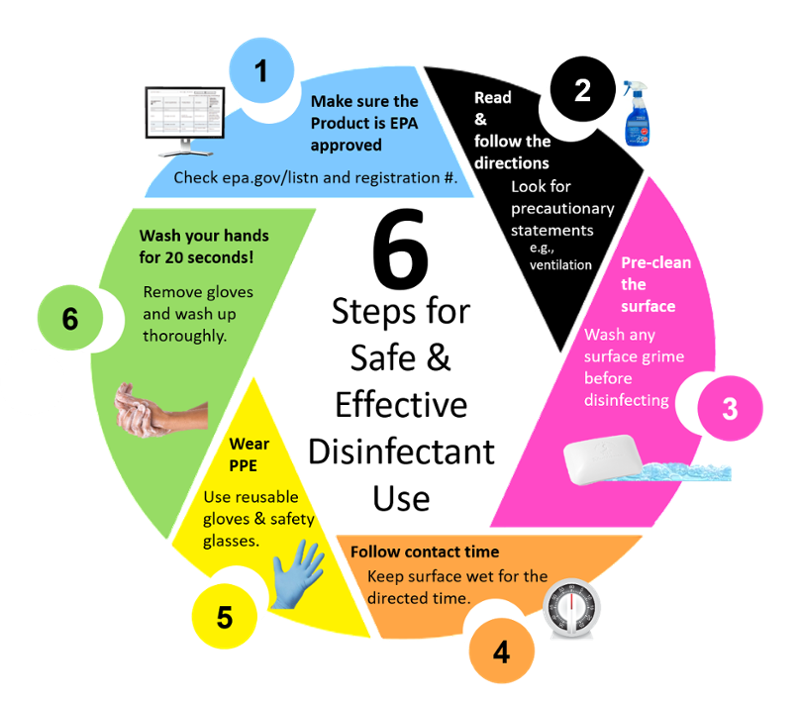
Steps Involved in Creating an Effective Surface Disinfection Protocol
Creating an effective surface disinfection protocol involves several steps, including:
- Identify the surfaces to be disinfected: The first step in creating an effective surface disinfection protocol is to identify the surfaces that need to be disinfected. This includes high-touch surfaces such as doorknobs, light switches, and countertops.
- Choose the right disinfectant: The next step is to choose the right disinfectant for the surfaces to be disinfected. This will depend on the type of surface and the level of disinfection required.
- Follow the manufacturer’s instructions: It is essential to follow the manufacturer’s instructions for the disinfectant being used. This includes the concentration of the disinfectant, the contact time, and the surface to be disinfected.
- Disinfect surfaces regularly: Surfaces should be disinfected regularly, especially in high-risk areas such as healthcare facilities.
- Monitor and evaluate the effectiveness of the surface disinfection protocol: The effectiveness of the surface disinfection protocol should be monitored and evaluated regularly to ensure that it is effective in preventing the spread of infections.
Best Practices for Surface Disinfection
There are several best practices that should be followed when disinfecting surfaces, including:
- Wear personal protective equipment (PPE): When disinfecting surfaces, it is essential to wear PPE, including gloves, masks, and eye protection.
- Use a microfiber cloth: Microfiber cloths are effective at picking up dirt and dust, and can help to prevent the spread of infections.
- Avoid using too much disinfectant: Using too much disinfectant can be wasteful and may not be effective in preventing the spread of infections.
- Avoid mixing disinfectants: Mixing disinfectants can be hazardous and may not be effective in preventing the spread of infections.
Surface Disinfection Protocols in Different Settings
Surface disinfection protocols can vary depending on the setting. For example:
- Healthcare facilities: In healthcare facilities, surface disinfection protocols are critical to preventing the spread of HAIs. High-touch surfaces such as doorknobs, light switches, and countertops should be disinfected regularly.
- Schools: In schools, surface disinfection protocols should focus on high-touch surfaces such as desks, chairs, and doorknobs.
- Offices: In offices, surface disinfection protocols should focus on high-touch surfaces such as doorknobs, light switches, and countertops.
- Public spaces: In public spaces, surface disinfection protocols should focus on high-touch surfaces such as handrails, elevator buttons, and countertops.
Frequently Asked Questions (FAQs)
- What is the best disinfectant to use?: The best disinfectant to use will depend on the surface to be disinfected and the level of disinfection required.
- How often should surfaces be disinfected?: Surfaces should be disinfected regularly, especially in high-risk areas such as healthcare facilities.
- What is the correct way to disinfect a surface?: The correct way to disinfect a surface is to follow the manufacturer’s instructions for the disinfectant being used, and to wear PPE.
- Can I use a disinfectant on all surfaces?: No, not all disinfectants can be used on all surfaces. Some disinfectants may be too harsh for certain surfaces, and may damage them.
- How can I ensure that my surface disinfection protocol is effective?: To ensure that your surface disinfection protocol is effective, you should monitor and evaluate its effectiveness regularly, and make adjustments as needed.
Conclusion
Surface disinfection protocols are a critical aspect of infection control and prevention in various settings. By following the steps outlined in this article, and by using the best practices for surface disinfection, individuals can help to prevent the spread of infections and keep themselves and others safe. It is essential to remember that surface disinfection protocols can vary depending on the setting, and to always follow the manufacturer’s instructions for the disinfectant being used. By working together, we can create a safer and healthier environment for everyone.
Closure
Thus, we hope this article has provided valuable insights into Surface disinfection protocols. We hope you find this article informative and beneficial. See you in our next article!